The Cessna Caravan hums softly, so softly that I am almost lulled to sleep by the rhythmic drone of its lone turbo-prop engine. But then I will have missed the nearly-imperceptible wisp of a road below as it disappears into a jungle of green florets—like millions of stalks of flowering broccoli. An endless ocean of trees, these thousands of acres of virgin rainforest proliferate in every direction. Until suddenly, the woodlands parted to make way for the powerful Potaro River where 30,000 gallons of water per second thunder into the chasm below Kaieteur Falls. The plane lands and the thirteen of us tourists descend onto the tiny airfield. We have arrived at one of the oldest geologic formations in the world—the Guiana Shield—deep in the interior of Guyana, the only English-speaking country in the Amazon River Basin. For those who want to visit an Eco-Lodge in Guyana, the Lokono-Arawak Amerindian Reservation offers a once-in-a-lifetime experience.
Excluding our lady pilot, just we thirteen and a handful of National Park Rangers residing on-premise, hike the short trail to the cascade. No guard rails hinder our view. Only a cluster of gargantuan tank bromeliads (Brocchinia micrantha), acting as natural aquifers for the rare endemic half-inch golden frog, stand between the sandstone ledge and the 741-foot plunge to the splash-basin below.
Day One, I write in my journal, is devoted to admiring the largest single-drop waterfall in the world, five times the height of Niagara, surrounded by insect-eating bladderwort plants and savannah scrub.
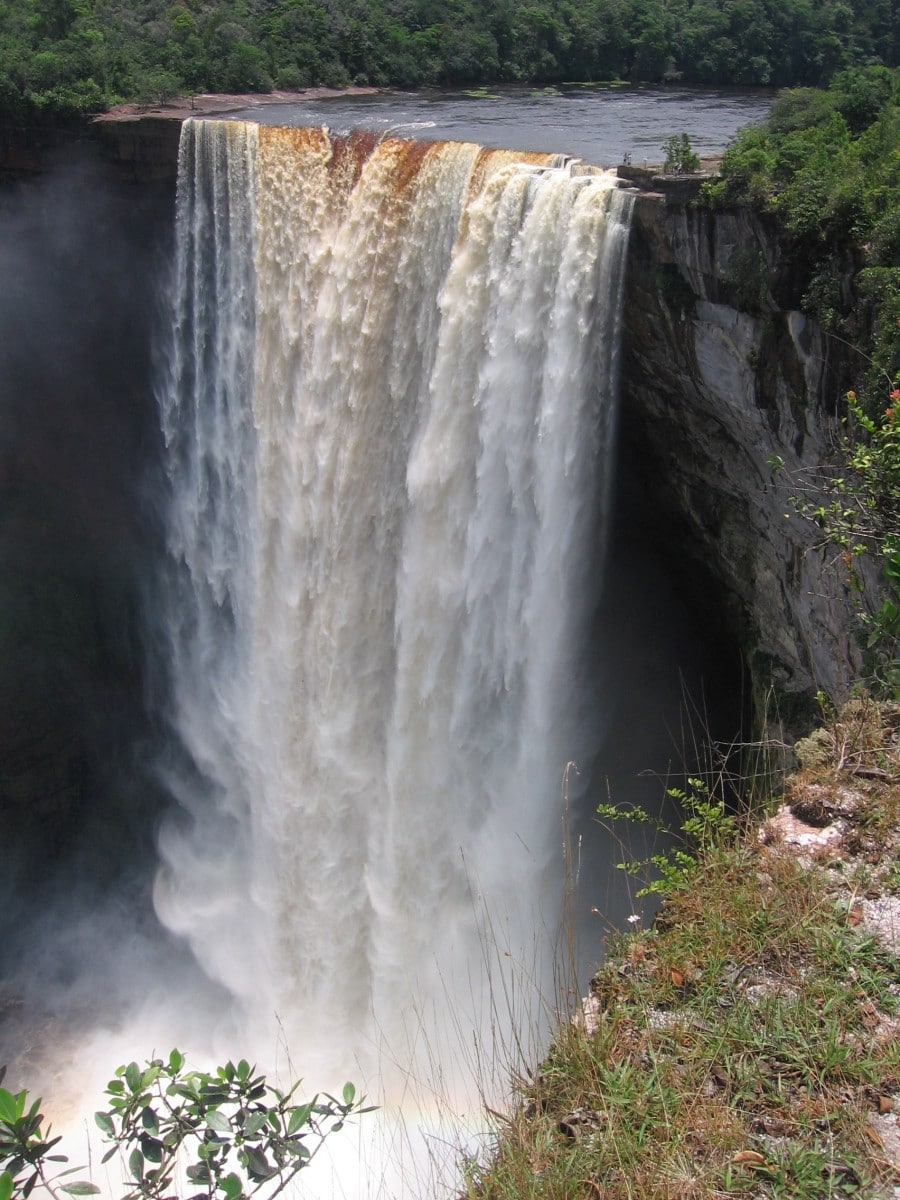
Kaiteur Falls near the Ayonto Hororo Eco-Lodge in Guyana. Photo courtesy Merlinthewizard via Wikimedia.
Life at the Eco-Lodge in Guyana – Amerindian Reservation
We’ll spend the rest of our time in Guyana as guests at the Ayonto Hororo Eco-lodge and Wildlife Sanctuary. In fact, my husband Gustavo, our teenage son Nicolas, and I will be the very first week-long visitors at this Eco-Lodge in Guyana. Located on the 240-square-mile crime-free, disease-free (no malaria or yellow fever) Lokono-Arawak Amerindian Reservation at Pakuri, the all-inclusive bed-and-breakfast sits a mere hundred yards or so from the black-tainted waters of the Mahaica River.
Our gracious host, Damon Corrie, heir to the Hereditary Chieftaincy of the Eagle Clan, has prepared a customized itinerary for us, based on our adventure preferences. Between thunderstorms, we’ve been riding the Mahaica River and fishing upstream for catfish and cichlids (like peacock bass). You can bet I’ve been on the look-out for a wayward water camoudi (anaconda) as we sit among fern fronds and red mangrove roots, baiting our fish-hooks with a smelly cheese-and-flour paste. With the waters flooded at least six feet beyond their banks from the daily cloudbursts of this rainy season, angling is lousy. Our efforts garner a single catch, barely worth keeping; still, Juanita, our cook back at the Eco-Lodge, prepares a fitting meal for us from that one medium-sized Kaab.
Nothing is wasted…no sports fishing or trophy hunting here on the reservation. Only a few of the Arawak men still hunt the traditional ways, like the ancestors did, with bows and arrows or dart guns. For tapirs, peccaries (Old World pigs), pacas, and agoutis (both small, dog-sized members of the rodent family) and marudies (wild turkeys). We reflect on our first evening’s supper of savory tapir with rice and yucca; Gustavo and I kept trying to decide if it tasted like pork or beef. Neither, as it turned out. But it was delicious.
In Search of Wildlife on the Savanna
The three of us have been ‘birding’ along the riverine forests, sometimes venturing in our john-boat right amongst the thorny ‘kongo-pong’ trees and thickets of ferns. We chase iridescent blue morpho butterflies as they flitter in ité palms and mukka-mukka (wild arum) bushes. Searching for that elusive Guyanese national bird—the hoatzin. With bright red eyes, a bare blue face, and a frizzled crest, this tropicbird is quite ‘prehistoric’ looking, and may just be. Its downy chicks, until maturity, have a pair of tiny claws on each wing, for clambering, much like those on the feathered dinosaur Archaeopteryx, believed to be an extinct Jurassic-era predecessor to the modern bird.
The Amerindians call it the Canje pheasant, but once we get close enough to catch a whiff of its rather-odorous, manure-like stench, we understand why it is often shamefully nicknamed the ‘Stink Bird’. A result of gastric belching, this fetid attack on our olfactory system lingers only momentarily. A rustle of wind through the red mangroves brings a breath of fresh air with it, and we retreat from the hoatzin’s nesting area—the buttonwood bushes—just as noiselessly as we eased in. Raunchy or not, this avian oddity is still my favorite, weighing in higher than the twittering hummingbirds, the Black-billed Anis, or the Yellow-bellied Kiskadees that we see all along the Mahaica.
On an early morning before the rains, we head off the Eco-Lodge grounds, down the winding reservation road, turned from dirt to soft loam from the overnight deluge. Backpack strapped to his back, our son Nicolas has already caught up with ‘Ducky’ and Tecumseh, Damon’s son, while we still lag behind. At the towering breadfruit tree on the right flank, we abruptly turn left and climb up a steep embankment, where a sandy patch of Savannah, dappled by tall grasses, monkey cutlass, and occasional Dakama trees, stretches before us. Leading directly into the Amazonian rainforest.
We are ‘field herping’, on a quest for snakes and lizards, amphibians, and invertebrates. I’m excited—and nervous—at the same time. I feel rather fearless in the knee-high wading boots that Damon has provided…until the narrow footpath in the forest disappears into a watery morass, fringed on both sides by almost-impenetrable brush. Down I go, on all fours, into the tannic overflow, as I kick a stump and lose my balance. That ‘fearless’ feeling leaves me rather abruptly as my hands slime across the gooey, decaying leaves that are nicely camouflaged in the muck.
Seeing that we can venture no further on the swampy trail, Buddy ushers us back to the savanna. Two rest stops later—one under a ripe cashew tree with juicy ‘apples’ for thirst-quenching and the other flopped on an outcropping of dirt in the shade of overhanging clouds—and we make it back to Ayonto Hororo Eco-lodge just as it begins to drizzle.
We eat traditional foods, like pepperpot, prepared from the carcasses of animals still hunted on territorial lands. Our last evening, we attend a BBQ especially for us and many of the tribes-members, most of whom are related to Damon or his wife. The teenagers—indigenous and non (Nicolas)—engage in a game of soccer like long-lost friends and we all have a chance to show off our skill at archery, using primitive, handcrafted bows and arrows. Turns out, our son is gifted, while Gustavo and I are not. I can barely hit the target and Gustavo misses entirely, sailing his arrow like a missile halfway down the path to the river, past the soursop tree.
Tribal Philosophies at the Heart of Eco-Lodge Success
As for me, I happen to be tattooed in temporary tribal art. “We paint ourselves to be like the parrot/macaw…it is a bird we admire and respect. We highly prize and value its feathers,” Damon says, sharing some of the Lokono philosophies.
A true conservationist at his core, dedicated to preserving the Arawak homelands at all cost, our Amerindian proprietor helped pen the 2003 Nancy Lewis Cullity Parrot Protection Act. Pakuri became the first indigenous reservation in all of Latin America to safeguard its dwindling populations of psittacines from capture and being sold into the foreign pet trade markets. Even now, the tribal law dictates that parrots/macaws kept as pets must be allowed the freedom to forage in the forests and the village.
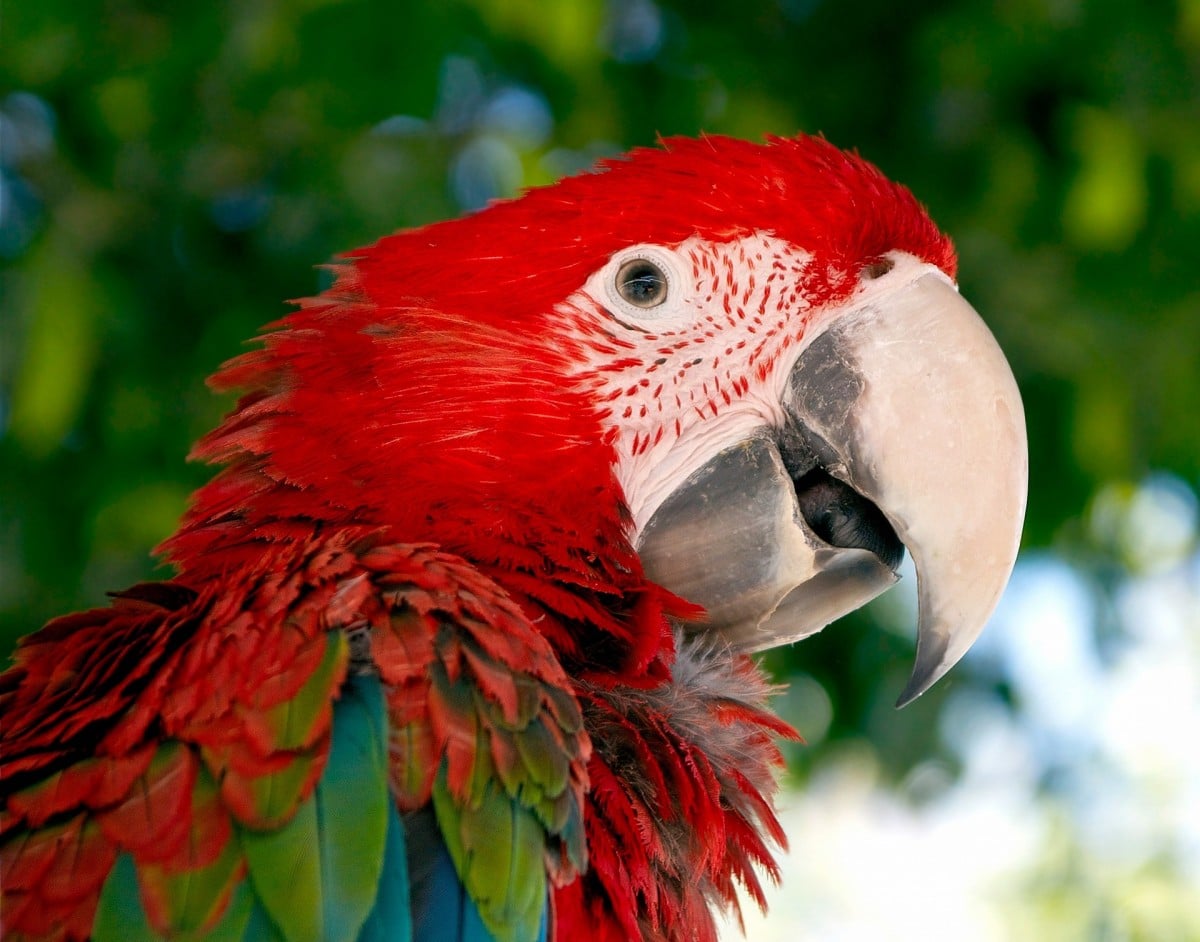
The 2003 Nancy Lewis Cullity Parrot Protection Act protects the dwindling parrot and macaw population in Guyana. Photo courtesy Creative Commons
Eco-tourism truly is the beating heart of the Arawak’s new entrepreneurial venture – to offer visitors from around the world a genuine Amazonian ‘experience’, where nature speaks for itself. In an outdoor classroom set in the ‘wild soul of Guyana’, we examine a red-tailed boa constrictor caught on the savannah just days before our visit, and manipulate yellow- and red-footed land tortoises breeding in a pen of low-growing papaya bushes behind the Eco-lodge. We enjoy the antics of a squirrel monkey and meet Ashton, the Yellow-crested companion Parrot living with our Amerindian guide ‘Ducky’. On our final night, in the darkness of sundown, we photograph an exquisite Green-winged Macaw, enormous beak and all.
The success of the Ayonto Hororo Eco-Lodge has other far-reaching impacts: the salvation of a Lokono-Arawak culture on the decline, as well as financial freedom for the 2000 indigenous men, women and children who make their home here in northern Amazonia. With 60%-70% unemployment on the reservation, many of the tribesmen contract out 3-4 months at a time with the logging and mining firms, the same companies depleting their rainforests of timber and leaving ugly scars on the land. “These foreign companies are only interested in making money,” Damon affirms. “They don’t care what they destroy. They reduce ‘nature’ to its worth in [dollars].”
Guests of the Eco-Lodge will help fill the community’s coffers with much-needed monies for improving education, health care, and helping the Amerindians create an ‘online presence’ in the new millennium. And a ‘home-stay’ with the Arawaks will offer an intriguing glimpse of Guyana’s true biodiversity. A biodiversity of not only its prolific wildlife but also its wide range of cultures: a whole lot Caribbean (descended from African slaves), equal part Hindu, a little bit Amerindian, and 100% all Amazon.
If You Go to Ayonto Hororo Eco-Lodge in Guyana
Ayonto Hororo combined homestay Eco-Lodge and Wildlife Sanctuary is located on the Upper Mahaica River, Region 4 in Guyana, South America. Visit the Ayonto Hororo website for more information on this Eco-Lodge in Guyana. Enjoy more articles on South America from our Wander writers.
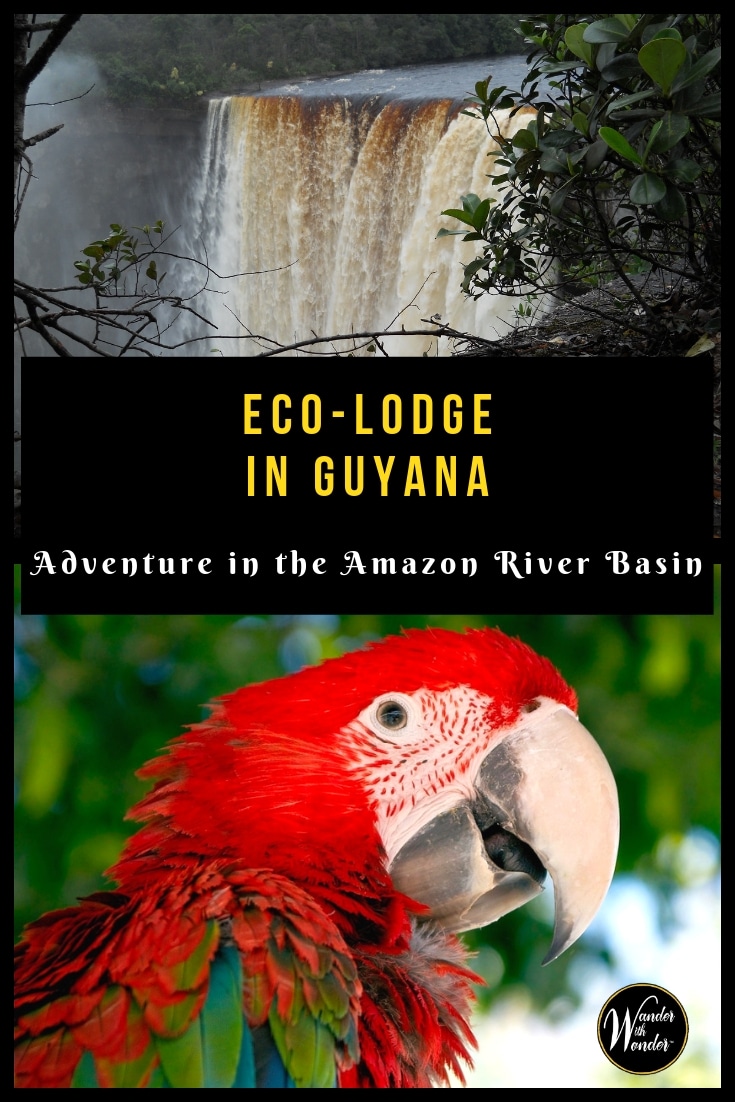

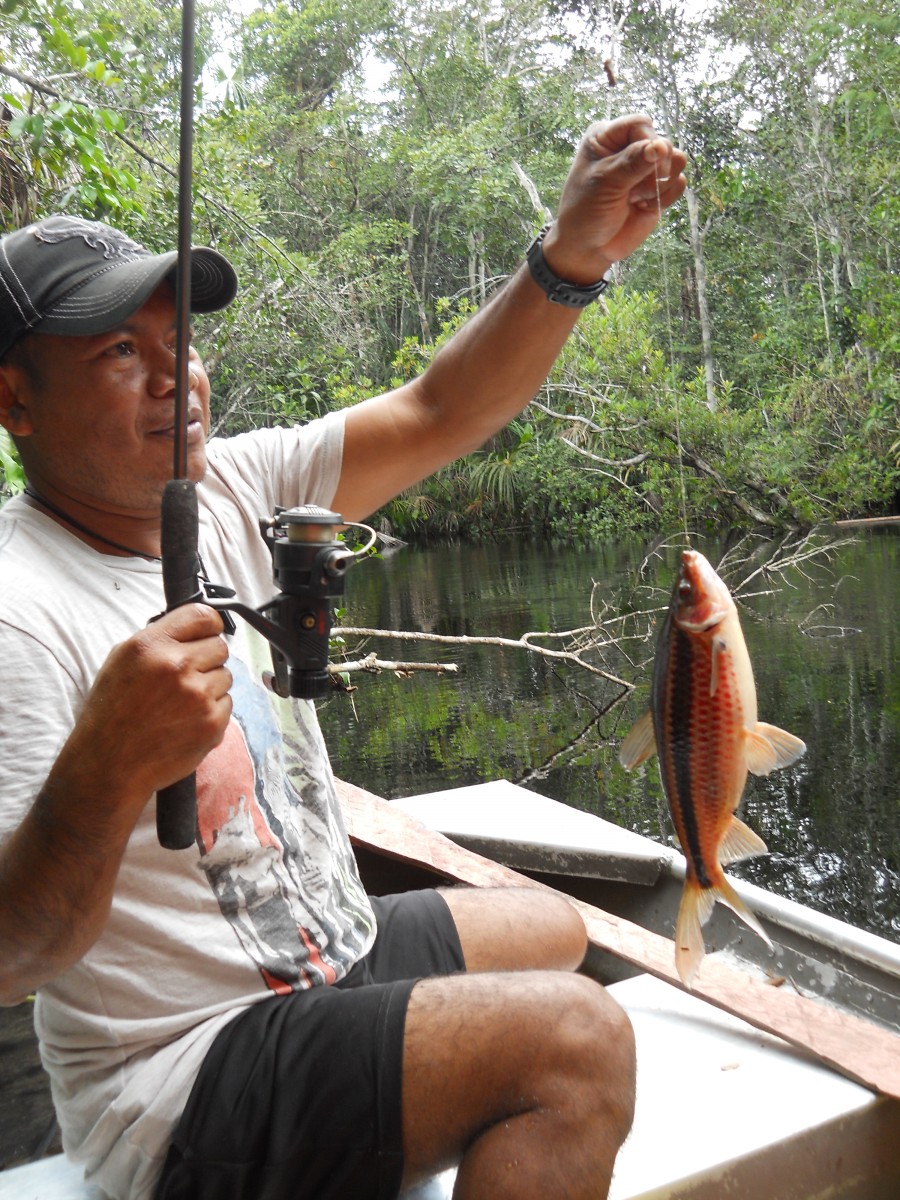
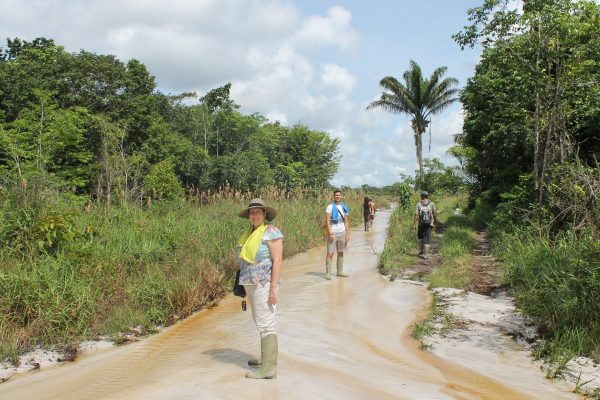
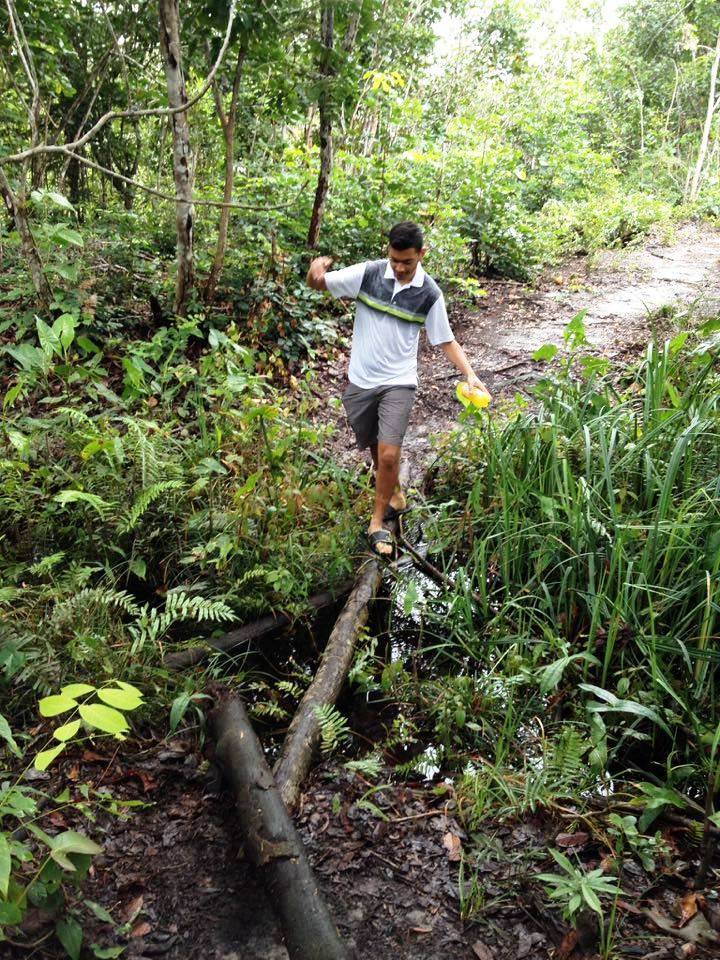


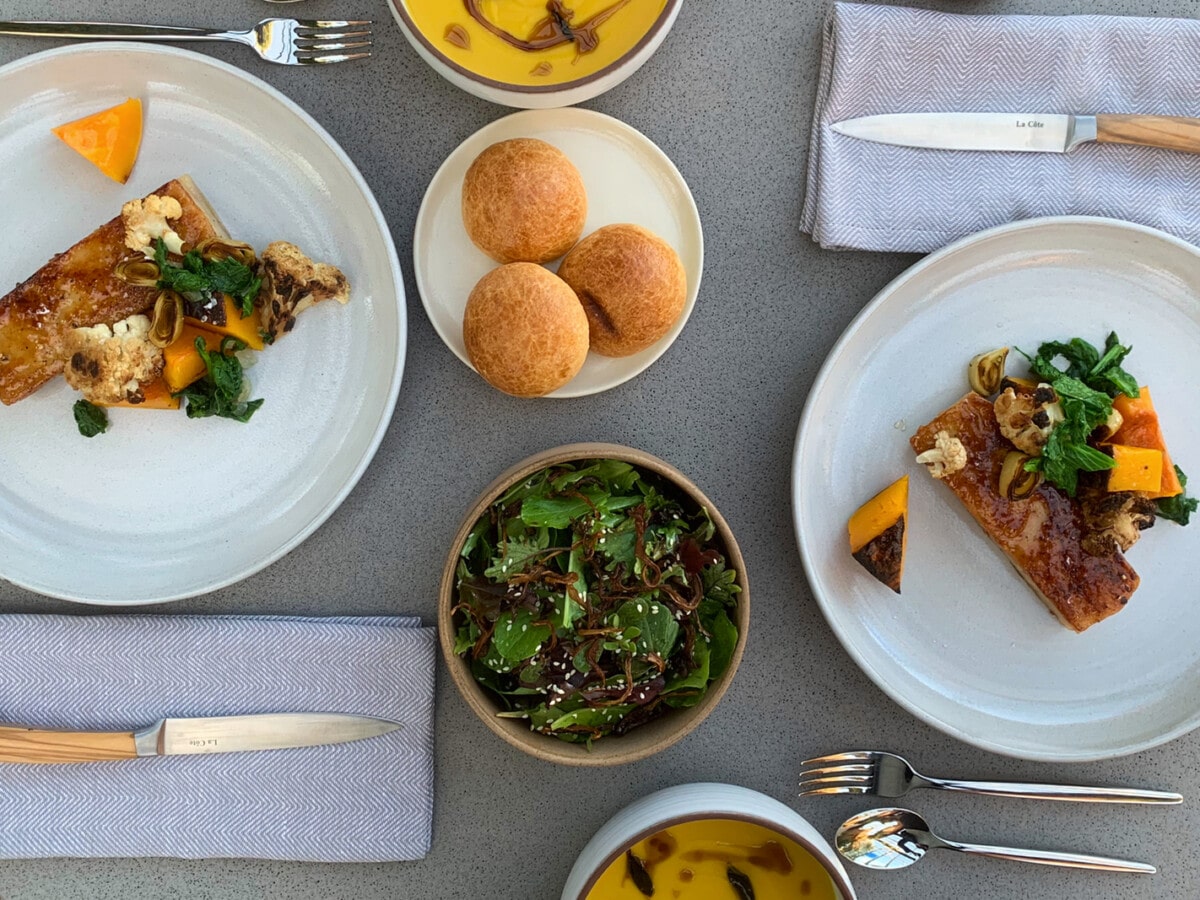

0 Comments